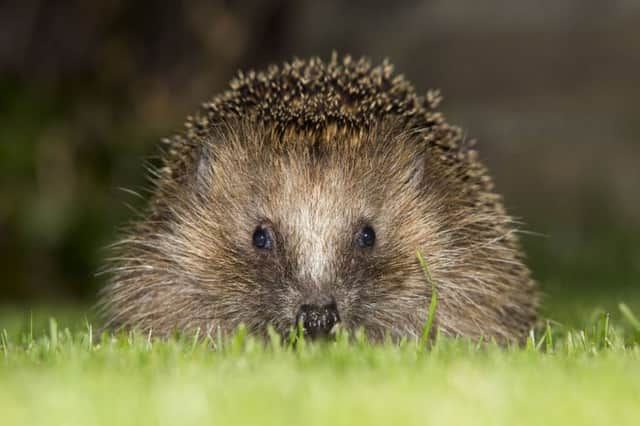Gardening: Create a haven for hedgebogs


Many worms, beetles, slugs, caterpillars and millipedes - which form the hedgehog’s natural diet - have been killed off by chemical treatments and intensive farming methods. Badgers also compete for the same food.
A recent wildlife survey by the RSPB found that the number of people who have never seen a hedgehog in their garden rose to 24% last year. And as hedgerows and the countryside, which forms their natural habitat, dwindles, so the garden becomes even more important as a hedgehog haven.
Advertisement
Hide AdAdvertisement
Hide AdSo what can we do to save this prickly garden favourite? The Wildlife Trusts advises:
:: Create hedgehog highways: They need plenty of access to search for food, nesting sites and mates. Cut a 13cm-squared hole in your fence or dig a channel under garden boundaries to allow them to wander and get your neighbours to do the same.
:: Provide nesting sites: Log and leaf piles, wilderness areas and purpose-built hedgehog homes are ideal places for hedgehogs to nest and hibernate.
Fallen leaves make the perfect nesting material, so don’t clear all of these away in autumn.
Advertisement
Hide AdAdvertisement
Hide AdPile them in quiet, undisturbed corners of your garden to allow hedgehogs a safe, secure area to breed and hibernate.
:: Avoid slug pellets: Hedgehogs hoover up more than 100 invertebrates such as snails, slugs and worms every night, so no need to use slug pellets.
:: Cover drains and gullies: Hedgehogs have poor eyesight, but are quite curious, meaning they fall into holes and get stuck, so cover up any open drains and gullies. If you have a pond, make sure you provide an access point so hedgehogs can climb back out - create a slope with stones or other material.
:: Grow a wide variety of plants: Attract plenty of natural hedgehog food by keeping your garden diverse with a wide variety of habitats.
Advertisement
Hide AdAdvertisement
Hide AdMulching beds with garden compost will encourage earthworms, woodlice and beetles as it begins to rot down, while wood piles encourage a rich feast of earwigs, centipedes and woodlice. Let your grass grow a little wild and leave some leaf litter - both are important homes for the hedgehog’s prey including ground beetles and leatherjackets.
:: Check bonfires: Every year, hedgehogs die under bonfire piles that have not been checked before being lit. The British Hedgehog Preservation Society advises avoiding building your bonfire until the day it is going to be lit to reduce the chances of hedgehogs hibernating in the bonfire pile.
Always build your bonfire on clear ground (not on top of leaf litter) and check for hedgehogs before lighting.
:: Set up a feeding station: Cut a clear hole in a plastic storage box and weigh down the lid with bricks to stop cats and foxes taking the food. If you are worried about attracting rats, don’t put out grain-based foods on the floor and take in any excess food when your hedgehog has visited.
For more information go to www.britishhedgehogs.org.uk and www.wildlifetrusts.org/hedgehogs